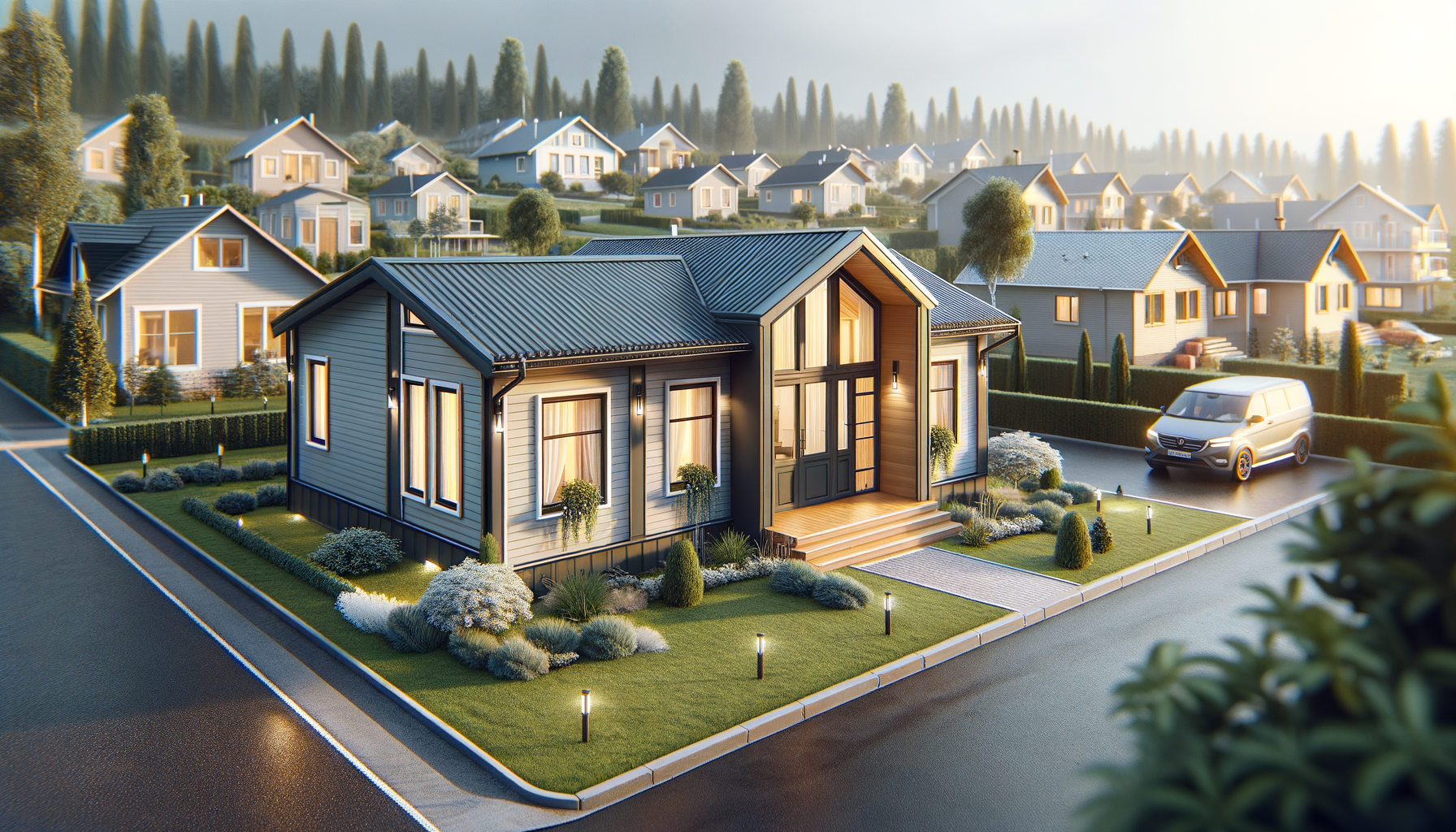Understanding Modular Homes
Modular homes, often referred to as prefab homes, are residences built off-site in sections or modules, which are then transported to the home site for assembly. This innovative approach to home construction is gaining popularity due to its efficiency, cost-effectiveness, and flexibility. Unlike traditional homes built entirely on-site, modular homes are constructed in a controlled factory environment, ensuring a high level of quality and precision. This method reduces the risk of weather-related delays and material wastage, making it an environmentally friendly option.
The process begins with the design phase, where homeowners can choose from a variety of layouts and customizations. Once the design is finalized, the modules are constructed with meticulous attention to detail, incorporating all the necessary plumbing, electrical, and HVAC systems. After the modules are completed, they are transported to the site and assembled on a permanent foundation, often in a fraction of the time it takes to build a traditional home.
Modular homes are not to be confused with mobile homes; they are permanent structures that comply with local building codes and standards. This ensures that they are as durable and reliable as any traditionally built home. With advancements in technology and design, modular homes offer an appealing option for those seeking a modern and efficient living space.
Cost-Effectiveness and Financial Benefits
One of the most significant advantages of modular homes is their cost-effectiveness. The factory-based construction process allows for bulk purchasing of materials, reducing overall costs. Additionally, the reduced construction time translates into lower labor costs, making modular homes an attractive option for budget-conscious buyers.
Moreover, modular homes often have better energy efficiency due to the precision of factory construction. This can lead to lower utility bills, providing long-term savings for homeowners. Many modular homes are designed with sustainability in mind, incorporating energy-efficient appliances and materials that reduce environmental impact.
Financing a modular home is similar to financing a traditional home, with options for mortgages and loans available. Some lenders may even offer specific financing packages tailored to modular homebuyers, recognizing the growing popularity and reliability of these structures. With the potential for significant savings and financial incentives, modular homes present a compelling case for prospective homeowners.
Customization and Design Flexibility
Modular homes offer unparalleled customization options, allowing homeowners to create a living space that perfectly suits their needs and preferences. From the floor plan to the finishes, buyers can choose from a wide array of options, ensuring that their home is a true reflection of their style and lifestyle.
The modular construction process is highly adaptable, enabling modifications and expansions with relative ease. Whether you desire a spacious open-plan living area or a cozy, compartmentalized layout, modular homes can accommodate your vision. This flexibility extends to the exterior design, with various architectural styles available, from contemporary to traditional.
Additionally, technological advancements have made it possible to integrate smart home features seamlessly into modular homes. Home automation systems, energy-efficient lighting, and advanced security features can all be incorporated during the construction phase, providing a modern and convenient living experience. The ability to tailor every aspect of the home makes modular homes a desirable choice for those seeking a personalized and adaptable living space.
Speed and Efficiency of Construction
One of the standout benefits of modular homes is the speed and efficiency of their construction. The factory-based process allows for simultaneous construction of different modules, significantly reducing the time required to complete the home. In many cases, a modular home can be ready for occupancy within a few months, compared to the several months or even years it may take to build a traditional home.
This expedited timeline is particularly advantageous for those who need to move quickly or are eager to settle into their new home. The controlled factory environment ensures that construction can continue regardless of weather conditions, minimizing delays and ensuring a consistent workflow.
Furthermore, the precision of factory construction leads to fewer on-site issues and a smoother assembly process. This efficiency not only saves time but also reduces the likelihood of construction errors, resulting in a high-quality finished product. The rapid turnaround time and reliable construction process make modular homes an appealing option for those seeking a swift and seamless homebuilding experience.
Environmental Impact and Sustainability
Modular homes are often lauded for their positive environmental impact and sustainability. The factory-based construction process minimizes waste, as materials are precisely measured and cut, reducing the amount of excess. Additionally, any leftover materials can be recycled or reused, further decreasing the environmental footprint.
Many modular homes are designed with energy efficiency in mind, incorporating features such as high-quality insulation, energy-efficient windows, and sustainable building materials. These elements contribute to a reduced carbon footprint and lower energy consumption, benefiting both the environment and the homeowner’s wallet.
Furthermore, the shorter construction time and reduced need for on-site labor and machinery lead to less disruption to the surrounding environment. This is particularly beneficial in areas with delicate ecosystems or strict environmental regulations. By choosing a modular home, homeowners can enjoy the satisfaction of knowing they are making an environmentally responsible choice, contributing to a more sustainable future.




Leave a Reply